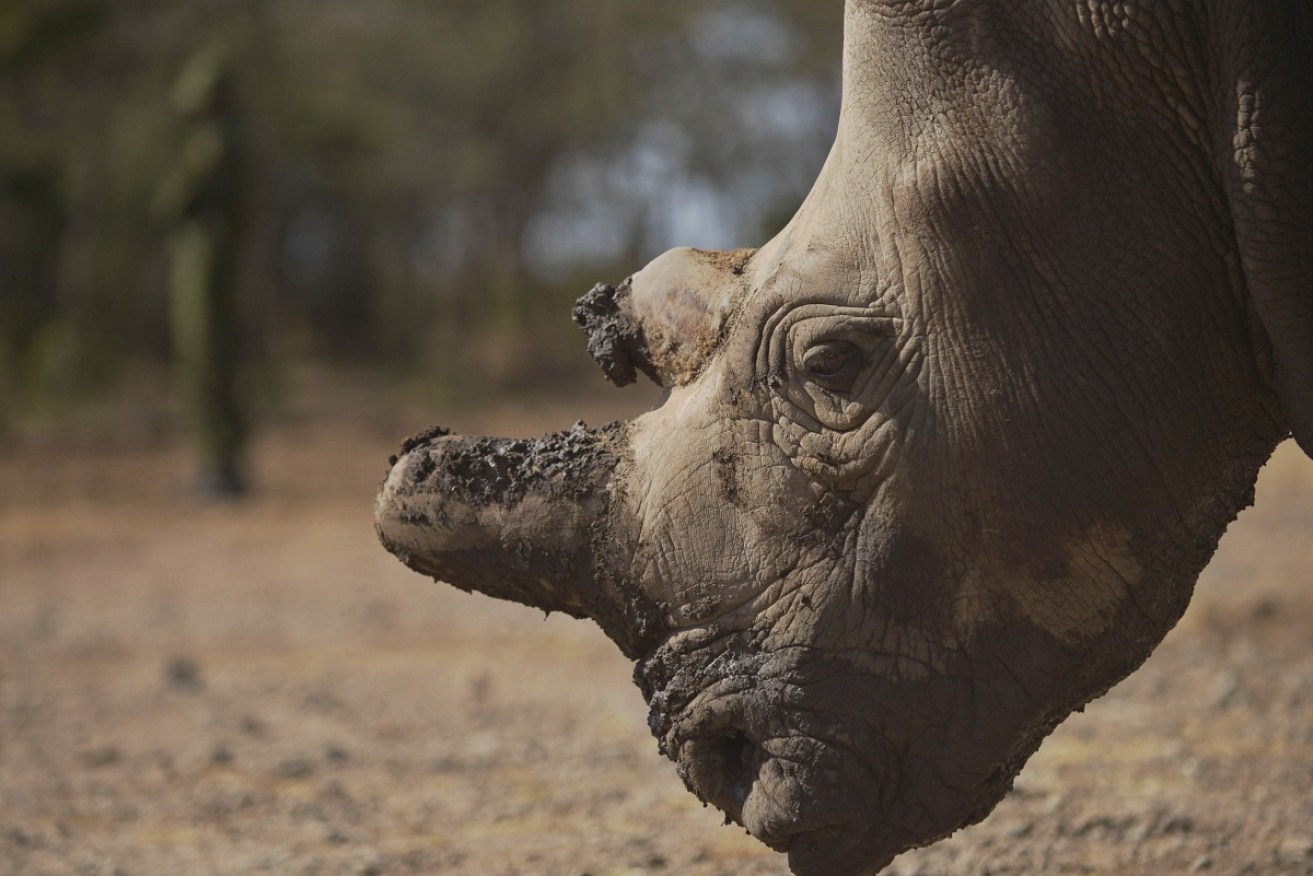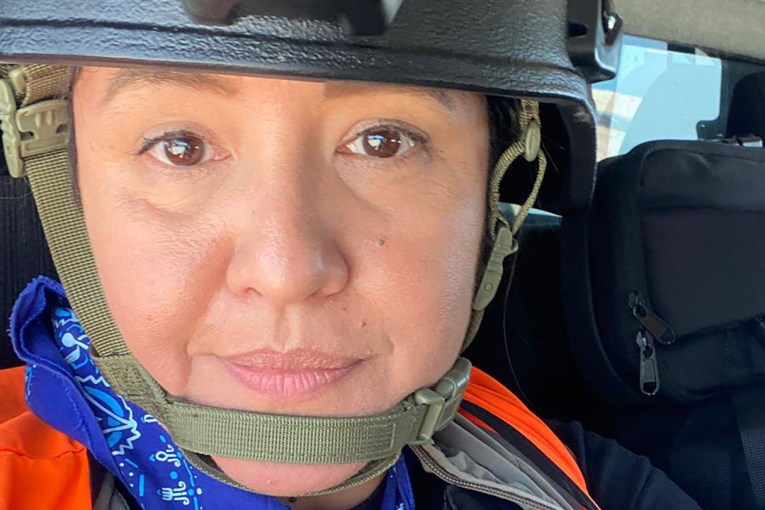The end is nigh for northern white rhinos

AAP
This is what extinction looks like.
No meteor from outer space, no unstoppable pandemic, no heroic, ultimately futile last stand.
Instead, poor sperm, weak knees and ovarian cysts mark the end of a lifeline cut short by human greed, ignorance and indifference.
• Zara drops angora wool over animal cruelty
• Endangered monkey eaten by otters in British zoo
• Orcas kill great white shark in ‘fight of all fights’
With just five northern white rhinos left on earth, the animal’s end is inevitable.
Scientists and conservationists hope advancements in genetics and in vitro fertilisation might allow for its test tube resurrection in the future, but before that the northern whites will die, one by one, in the next few years.

Najin and a companion southern-white female at Ol Pejeta Conservancy, 290 kms north of the Kenyan capital, Nairobi. Photo: AAP
“We are down to five, so they are very close to extinction, perhaps in a few years,” Jan Stejskal of the Dvur Kralove Zoo in Czech Republic says, which, thanks to acquisitions in the 1970s, owns the remaining northern whites.
“I still believe there is a hope we will be able to save them.
“The best we can do now is harvest sperm and egg samples for future in vitro fertilisation, and wait until the time the techniques are developed enough to give us a good chance of reproduction.”
The last living male, named Sudan, is found on a 36,400ha reserve of savannah and woodlands in central Kenya, along with two of the remaining females.
The other two females live alone in zoos in the Czech Republic and the US.
Two other males – Angalifu and Suni – died last year.
At 43, Sudan is elderly by rhino standards, and vets say his sperm is low quality.
Nola at San Diego Zoo is also beyond reproductive age, while Nabire at Dvur Kralove Zoo is 31 but suffers from ovarian cysts.
In Kenya, Najin, 25, cannot mate because of her weak hind legs, while her daughter Fatu, 14, is infertile.
The Ol Pejeta rhinos were shipped from Dvur Kralove in 2009 in the hope the natural environment would encourage breeding.
That hope has faded.
“Were these free-ranging animals out in the wild they would breed just fine, but they were old animals, they came from a zoo and you don’t have a normal social situation,” Dr Peter Morkel, a vet and rhino expert at conservation group Back to Africa, says.
“There were a number of matings and at one stage we were pretty sure Fatu was pregnant.
“I think we got pretty close.”
Fatu will likely be the last.
Demise of species
“We are going to witness the demise of this species. That’s the reality of what we face. They are going to die here,” Ol Pejeta chief executive Richard Vigne says.

Northern white female rhinoceros Najin, one of only five members of the sub-species left on the planet, at Ol Pejeta conservancy. Photo: AAP
“It is an indictment of what the human race is doing to planet Earth and it’s not just happening to rhinos. It’s happening to all sorts of species, big and small, across the planet, lamenting decades of inaction. ”
Scientists call the mass wiping out of species by humans the “sixth great extinction” – the fifth being the one that killed off the dinosaurs 65 million years ago.
The northern white rhino’s demise is unusual only because it is such a large, recognisable animal.
“The northern white’s geographic range was central Africa and subject to war, strife and lawlessness, and that opened the door for poachers to kill them at will. People are absolutely to blame,” Vigne said.
Modern rhinos have plodded the earth for 26 million years.
As recently as the mid-19th century there were more than a million in Africa.
The last northern whites disappeared from the wild a decade ago and will soon follow the western black rhino, which was declared extinct in 2011.
-AAP








